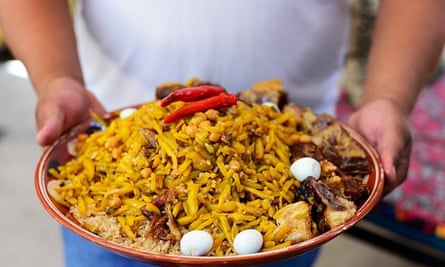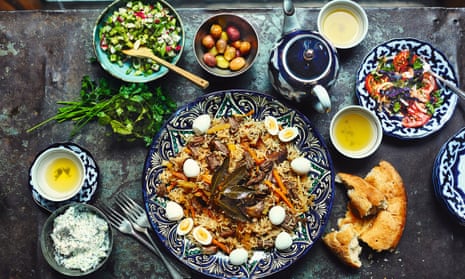In a small, unremarkable restaurant on Firdavsi Street in Samarkand, the plov arrives at our table. At its most basic, plov is rice with onion and carrots, plus either mutton, lamb or beef, cooked slowly in layers. But this is no ordinary plov; this is plov with bells on, and it takes two waiters to carry the lagan (platter) to the table.
Atop the lightly oiled rice and matchsticks of soft yellow carrots, are 12 roasted quail (whole), horse meat sausages (sliced), quince (quartered), a scattering of glossy white quails’ eggs and countless slivers of thinly shaved beef. As the steam lifted, filling the room with a rich, meaty aroma, the whole restaurant diverted their eyes from the Uzbek soap opera on the television to admire this elitni, or VIP, plov. That lunchtime, 12 of us feasted from the platter, and by the end there was still some going spare.

Though served all over central Asia, plov is a national obsession in Uzbekistan and across the border in neighbouring Tajikistan, where people pride themselves on their skill in preparing the tasty dish. The most skilled chefs – called oshpaz – can serve plov for up to 1,000 people from a single kazan (cauldron) at weddings and festivals. For Uzbeks, arguably the masters of plov, the dish represents hospitality, community and identity.
Travellers have long noted the qualities – and quantities – of this rice dish. Arminius Vámbéry, in his 1863 book Travels in Central Asia, wrote of a plov prepared in Samarkand: “The princely pilow [plov] … consisted of a sack of rice, three sheep chopped to pieces, a large pan of sheep’s fat (enough to make five pounds of candles) and a small sack of carrots …”

Comments (…)
Sign in or create your Guardian account to join the discussion